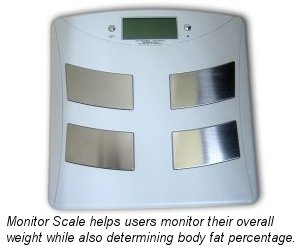AICAR, GW1516 Are An Exercise In A Pill
AICAR and GW1516 experiments suggest that these two drugs, also called exercise in a pill, might protect against gaining weight on a high-fat diet, which might make it useful for treating obesity.
Researchers have identified two drugs, AICAR and GW1516, that mimic many of the physiological effects of exercise. The drugs increase the ability of cells to burn fat and are the first compounds that have been shown to enhance exercise endurance.
Both AICAR and GW1516 can be given orally and work by genetically reprogramming muscle fibers so they use energy better and contract repeatedly without fatigue. In laboratory experiments, mice taking the drugs ran faster and longer than normal mice on treadmill tests. Animals that were given AICAR, one of the two drugs, ran 44 percent longer than untreated animals. The second compound, GW1516, had a more dramatic impact on endurance, but only when combined with exercise.
Ronald M. Evans, the Howard Hughes Medical Institute investigator who led the study, said drugs that mimic exercise could offer potent protection against obesity and related metabolic disorders. They could also help counter the effects of devastating muscle-wasting diseases like muscular dystrophy. Evans and his colleagues, who are at the Salk Institute for Biological Studies, published their findings on July 31, 2008, in an advance online publication in the journal Cell.
Concerned about the potential for abuse of the two performance-enhancing drugs AICAR and GW1516, Evans has also developed a test to detect the substances in the blood and urine of athletes who may be looking for way to gain an edge on the competition.
In 2004, Evans and his colleagues genetically engineered mice that had altered muscle composition and enough physical endurance to run twice as far as normal mice. These “marathon mice” had an innate resistance to weight gain, even when fed a high-fat diet. “We made these mice and they had low blood sugar, they resisted weight gain, they had low fats in their blood. They were much healthier animals,” Evans said. “And when we put them on a treadmill, the engineered mice ran twice as far than normal mice - they transformed into remarkable runners.”
The scientists achieved these effects by modifying a gene called PPAR-delta, a master regulator of numerous genes. Evans and his colleagues showed that by enhancing PPAR-delta's activity, they had shifted the genetic network in muscle cells to favor burning fat over sugar as their energy source. But the effects seen in the marathon mice were caused by a genetic manipulation that was present in their bodies as their muscles were developing. Evans's group began to wonder whether they could duplicate these effects by turning on PPAR-delta in adult mice.
“We had shown that we could pre-program muscle using genetic engineering. If you express this gene while the muscle is being formed, you can increase the amount of non-fatiguing muscle fibers,” Evans says. “But what about reprogramming in an adult? When all the muscles are in place, can you give a drug that washes over the muscle for a few hours at a time and reprograms existing muscle fibers? That's a very different question.”
PPAR-delta has long been an attractive drug target because of its central role in metabolism, so Evans and his colleagues had no shortage of chemical compounds available to test. They began by testing a compound called GW1516. They treated young adult mice with the drug for five weeks. “We measured gene changes and the muscles looked like they were responding, so we knew the drug was working.”
Thus, while fully expecting the drug to dramatically increase endurance - Evans says, “There was no change at all in running performance. Nothing — not even a percent.”
Surprised by this spectacular failure, Evans and his colleagues decided to try a different approach, based on real-life experience. “If you're out of shape - and most of us are - and you want to change, you have to do some exercise. The way we reprogram muscle in adults is by training.”
-
Ten Ways to Supportt Your Body's Natural Detoxification
Detoxification: Top Ten Ways to Support Detox on a Raw Foods Diet A
-
How To Get Skinny Legs Fast
A quite very good quantity of people are
-
Are All The Side Effects Of Weight Loss Detox Diets Negative?
A detox diet for weight loss is meant to give us major weight loss,
-
New Weight Loss And Diet Books
Attempting to lose weight has never been easier than it is today. Curr
-
Subliminal Mp3 Technology To Get Rid Of Addiction
We have come far in the race to perfection and the search for perfecti
-
What Most People Have To Say In NutriSystem Reviews
For those people who do not believe in the success stories they read i
- DON'T MISS
- Environmental Cost Accounting And Ecological Truth
- A different appraoch to weight loss
- Why You Should Burn Stubborn Fat (And How to Do It Right)
- Losing Weight After Pregnancy
- A Lot Of Easy Eating Plan Helpful Hints To Aid You Remove Weight
- Be More Investigative When Choosing Weight Control Products
- Are You Unable to Lose Weight? Discover the Real Causes that Make You Weight Loss Resistant......and the Practical Solutions to Deal with them!
- Top 10 Weight Loss Lies to Eliminate for Steady Weight Loss
- The simplest way to Lose 6 Pounds In A Week Swiftly
- Menopausal Hormones, Black Cohosh Herb, for Helping Weight Loss




